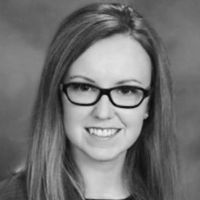This text-based course is a transcript of the webinar, "Play-Based Therapy: Theory and Methods," presented by Meredith P. Harold, PhD, CCC-SLP.
>> Dr. Meredith Poore Harold: The methods that we are going to discuss today are applicable to anyone who wants to teach children; whether that is an SLP, a teacher, PT or OT. I have actually given a similar version of this lecture in schools to help all of the early educators get on board with play-based therapy. I will speak today assuming that you are mostly all SLPs, but we will have some theory that crosses disciplines as well.
What is “Play”?
Before applying any of the principles of play-based therapy directly to speech language learning, we need to understand what play is. The broad definition of play shows you what all definitions of play have in common or at least the wide majority of them. There are also narrower definitions and what they include. The reason there is no perfect definition of play is because studying play crosses disciplines from psychology to biology to education, and then what is relevant to us as SLPs. There is a lot of variability in the definitions.
Broad Definition
First, play is flexible and nonliteral. What is meant by this is that play behaviors vary from real ones so they are flexible or they are free to lack aspects of their usual meaning, which is nonliteral. If you were to take the example of a child play “making dinner,” they cook, do the dishes, serve dinner, and all of the aspects of that. Within this whole scheme, the play can vary in ways that it would not vary in the real world. For example, after eating dinner you can put the dishes right back in the cabinet without washing them or you can eat your dinner with a stick instead of a spoon.
Play is going to have positive affect, meaning that if it is not fun, happy, and enjoyable, then it really does not count as play. It is turned into something else. Play is intrinsically motivating. This means the child wants to engage in the play. No one is making them do it and at every moment they are making a choice about how they would like to engage in that play.
Play is also active rather than passive. Sitting and watching other people play or sitting and watching play on the television does not count. In play, there are no extrinsic goals or learning that must occur. If you are in a classroom and the teacher imposes too many restrictions on the play. For example, in the dinner scenario, if the teacher has a rule that you have to put three foods on each person's plate, that each person has to have a play vegetable, and that the dinner has to go a certain way, it switches over from being pure play to being something else.

